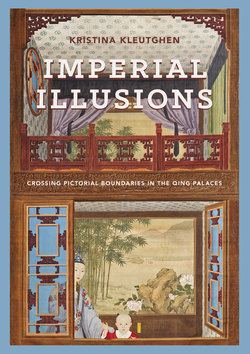Читать книгу Imperial Illusions - Kristina Kleutghen - Страница 65
ОглавлениеDespite the Jesuits’ consistent and successful missionary activity throughout the eighteenth century, in 1773 Pope Clement XIV (r. 1769–74) issued a bull formally suppressing the Society of Jesus and its members. Giuseppe Panzi and Louis de Poirot, having arrived only two years earlier, stayed on as painters at the Qing court well into the Jiaqing reign. Poirot also served as a translator and continued the work of the Jesuit mission in the first translations of the Old Testament into Manchu and of the New Testament into Chinese. Very little is known about either of these painters, and only a few works thus far can be conclusively attributed to them; their continued presence at the Qianlong court as well as at the Jiaqing court remains unexplored. Although the Society was restored in 1814, just one year after Poirot’s death, the Jesuits would never regain their earlier influence, and their artistic presence at the Qing court ended with him, thereby also ending this unsurpassed period of Qing court use of European pictorial techniques in the service of the state.
Even with the High Qing imperial court’s clear approval of European artists and their skills, some Chinese artists maintained the literati criticism of their illusionistic paintings in particular, including Zou Yigui (1686–1772), who painted for the court alongside the Jesuits. In 1756, he commented,
The Westerners are good at geometry, therefore their paintings depict light and shade, nearness and distance, without missing the tiniest detail. All the figures, structures, and trees in their paintings have shadows cast by the sun. Their colors and brushes are completely different from the Chinese. They paint shadows from the widest point to the narrowest, calculated using triangles. When they paint palace rooms on walls, it makes you almost wish to walk inside. Students could adopt one or two [of these techniques], and thus catch [the viewer’s] attention with this method. However, it is completely devoid of brushwork, and although skillful is merely artisanal. Consequently, this is not art.100
Zou notes the mathematical foundation of the works, particularly the role of geometry in creating the impressive effects of shadow and spatial recession, and perhaps even implies some astronomical observation by noting the presence of “shadows cast by the sun” (riying). The necessity of both technique and technical knowledge in creating these illusions is the basis for why Zou emphatically belittles the resulting paintings as not being art (huapin, literally “paintings of quality”). Because Zou considered brushwork, and by implication its inherent self-expressiveness, the essential element that defined a work not only as art, but also as a specifically Chinese work of art (in direct contrast to the Western products), his comment has been characterized as the “first time that the expressive mark was deployed in international cultural politics.”101 If Zou Yigui, a professional court painter who worked under the same rarefied Qing imperial patronage as Giuseppe Castiglione and was therefore himself not a true literati painter in the ideal sense of an independent amateur, still considered European techniques like perspective to be crafts or technical
